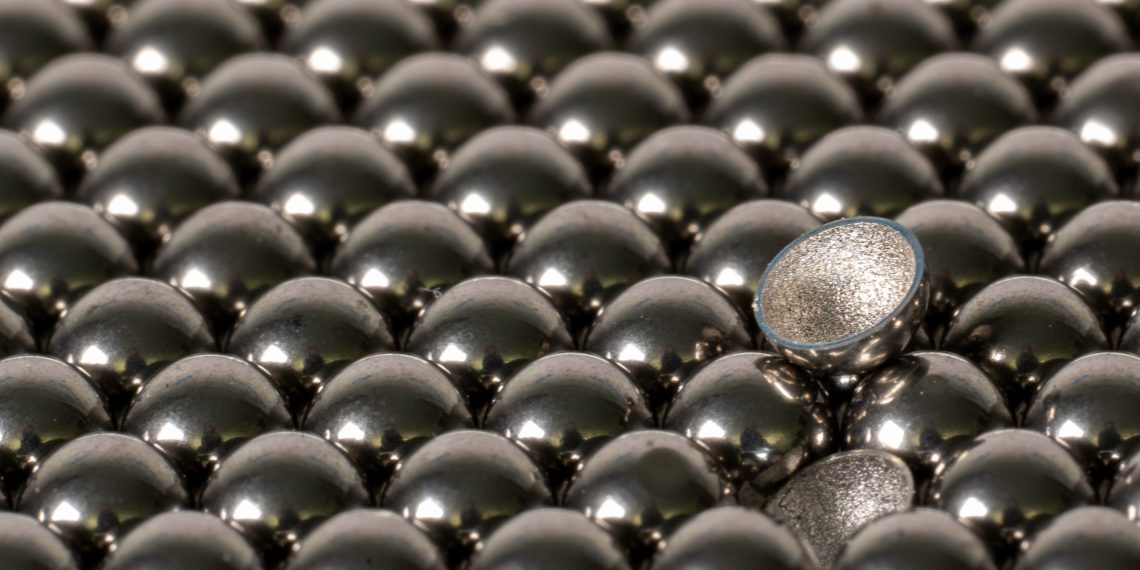Balls are indispensable in numerous technical applications. An innovative process now makes it possible to produce ground and polished hollow balls from metallic and ceramic materials with a diameter of one millimeter or more and designed for specific applications. These lightweight rounds can reduce weight by up to 90 percent. They thus open up completely new perspectives for optimizing existing applications in terms of lightweight design and realizing new ball applications.
From automotive and mechanical engineering to automation, measuring, medical and valve technology to aerospace, there is hardly an industry in which balls do not play a role. When it comes to metallic precision balls, usually only solid variants were available. Only for special applications was it worthwhile to manufacture polished hollow balls from deep-drawn sheet metal. However, this complex process could only be used to produce metallic hollow spheres with a diameter of ten millimeters or more. The production of smaller sizes has not been technically feasible up to now. Ceramic hollow spheres have hardly been available on the market to date. As a result, the balls are often oversized and significantly heavier than necessary, thus counteracting lightweight construction efforts to save resources and energy.
Application-specific design of hollow metal and ceramic balls
To eliminate this problem, Hollomet GmbH, in cooperation with Ballcenter Handelsgesellschaft mbH & Co. KG has developed a globally unique process for the reproducible production of hollow balls. The technology makes it possible to manufacture balls with defined wall thicknesses of a few tenths of a millimeter, extremely precise diameters, roundness and the lowest tolerances starting at one millimeter. In the patented process, many metals that are available in powder form and can be sintered, such as high-strength steels and stainless steels (AISI316), as well as
ceramic materials such as silicon nitride (Si3N4), silicon carbide (SiC), aluminum oxide (Al2O3), zirconium oxide (ZrO2) and even piezoceramics. The high-precision final grinding is performed by ball centers. Compared to a solid ball, weight savings of up to 90 percent are thus achieved. At the same time, the highly flexible choice of materials enables the physical, chemical and thermal properties of the balls to be precisely matched to the application. This means that, among other things, magnetism, temperature resistance and/or resistance to chemicals can be influenced as required.
Solution for optimized and new products
Optimum adaptation to mechanical and chemical requirements opens up countless possible applications. These include measuring devices in which the high weight of the solid balls previously used can cause disturbing vibrations. In the case of high-speed spindles used in the textile industry, among others, optimally designed hollow balls enable energy savings by reducing the mass to be moved. Hollow balls promise lower energy consumption with improved infeed precision in automation and drive technology, for example in robots and linear systems as well as tool infeed in CNC machines.
The reduced ball mass also has a positive effect on the response times of high-speed valves used, for example, in hydraulics, pneumatics, engine construction, injection valves and metering technology. Measuring the level or flow of aggressive media is also an application where metallic and ceramic hollow balls can offer advantages over the usual plastic-based solutions. A special area of application for ceramic hollow spheres arises in the manufacture of technical equipment which, like magnetic resonance tomographs, can be sensitive to magnetic materials.
In the broad segment of bearing technology, very different requirements are placed on the solid balls normally used, so that they cannot simply be replaced by hollow balls. However, it is also worth considering lightweight solutions with the weight-reduced alternative of metal or ceramic in this area. After all, in the growth market of electromobility or even in drones, which are expected to take on more and more functions in the future, every gram less counts.
The development of the ball specification is carried out according to customer requirements. Production as well as the coordination of processes from blank machining to warehousing and disposition is possible in small and large series. Hollomet and Ballcenter provide advice and support in defining the application-specific properties, which can be checked and optimized by a sample series prior to series production.

















